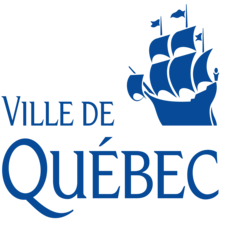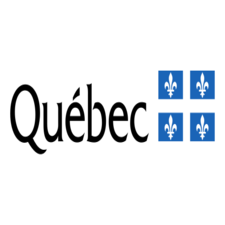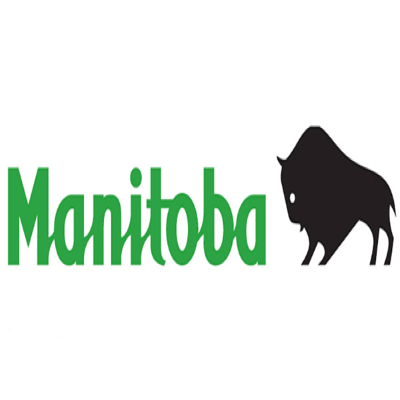Watershed
Type of resources
Topics
Keywords
Contact for the resource
Provided by
Years
Formats
Representation types
Update frequencies
status
Service types
Scale
-

Mapping of watersheds in the territory of Quebec City.**This third party metadata element was translated using an automated translation tool (Amazon Translate).**
-
Created for distribution by the GeoYukon application as a comprehensive resource for all publicly available Biophysical information in the Government of Yukon. This data may be used directly by other applications to dynamically display Yukon data; however, it may be subject to change as data sets are updated or added.
-

This theme includes lake catchments, the majority of which are part of the Voluntary Lake Monitoring Network (RSVL). The dataset also includes the lake outlet layer and tables for compiling land use by year for each watershed. Outfall and watershed layers and land use tables are linked together using the lake number from the Lakes and Rivers (LCE) database.**This third party metadata element was translated using an automated translation tool (Amazon Translate).**
-

This theme offers detailed information on lakes and waterways throughout Quebec. All the descriptors available in this layer come directly from the Lakes and Rivers (LCE) database. The data includes lake centroids and stream junctions and includes information on lake morphology such as length, width, depth, volume, and elevation, as well as the area of watersheds. This data is intended for researchers, engineers, government agencies, government agencies, environmental professionals, as well as students and industries, for applications in the environment, hydrology, and hydraulics. **This third party metadata element was translated using an automated translation tool (Amazon Translate).**
-

Being anxious to participate in the adaptation of agricultural businesses in a context of climate change, MAPAQ has commissioned a study to better identify the challenges current and future of water management. The mandate involved drawing up a portrait of needs. water supplies at the regional level of the various users (agricultural and residential sectors, as well as only institutional, commercial and industrial) to understand what uses and users of water may be the most affected in the future by climate change. The project had also the objective of identifying innovations that would mitigate conflicts of use some water. Beyond data, the project was based on a participatory approach and called on the participation of the regional actors concerned. A first phase (RADEAU 1) started in 2016 covers the regions of Montérégie, Estrie, Chaudière-Appalaches, Lanaudière and Center-du-Quebec. A second phase (RADEAU 2) began in 2017 for six other regions: Mauricie, Laval, Bas-Saint-Laurent, Capitale-Nationale, Laurentides and Outaouais.**This third party metadata element was translated using an automated translation tool (Amazon Translate).**
-

A vector representation of stream networks is a crucial dataset for the modelling the surface water and groundwater components of the hydrologic cycle. For many usages a crucial attribute of the drainage network is a digital topology and hierarchal stream order attribute (e.g., Strahler stream order). In Canada jurisdictional stream networks are available for the provinces and territories and nationally for Canada in the National Hydrological Network (NHN) dataset. Unfortunately, the NHN data lacks the same topological and attribute information that is available for numerous provinces due to standardization for the entire country. For Canada1Water it was also necessary to have a harmonized dataset with the United States, for both the southern transboundary watersheds and the Alaskan watersheds. This report documents the processes completed to upgrade the topological and graph network support for NHN and provide continuous connectivity with US datasets. It also highlights and corrects a number of stream density and stream order issues that occur within Canada across provincial and territorial borders and NTS tiles. All vector processing was completed in RivEX software extension for ArcMap. Following complete topological correction stream classification was assigned and a table of the node graph network developed. Additional work was then completed to normalize stream density particularly amongst low-order streams between British Columbia and the Yukon and amongst local NTS tiles in Quebec and Ontario. Corrected NHN Strahler stream order assignment was validated against a number of provincial and watershed datasets, all of which already have Strahler stream order attributed. These datasets are the same underlying digitized vector data, so there are no differences in node or polyline positions. Strahler stream order assignment validation was only done by visual comparison as due to differences in vector segments a statistical comparison is complicated. The transboundary integrated C1W stream network with complete classification provides a seamless national dataset to support transdisciplinary studies (fisheries, wildlife, health, pesticide and nutrient issues, mining impact, ecosystem restoration, numeric modelling) that involve a knowledge of stream distribution and ranking.
-

This polygon layer presents the spatial distribution of forecasted accumulated precipitation from the Global Forecast System (GFS) over watershed sub‑basins. GFS APCP raster data are overlaid with global watershed boundaries, and zonal statistics are computed to derive average precipitation per sub‑basin over a 7‑day (168‑hour) period. This product aids in global disaster preparedness and water management planning. GFS model output is processed into APCP rasters that capture accumulated precipitation over a 7‑day forecast period. These rasters are then combined with watershed boundary data, and zonal statistics are applied to compute average precipitation for each sub‑basin. The final polygon features provide a clear depiction of global rainfall and snowfall patterns, offering critical information for disaster risk management and international water resource planning.
 Arctic SDI catalogue
Arctic SDI catalogue